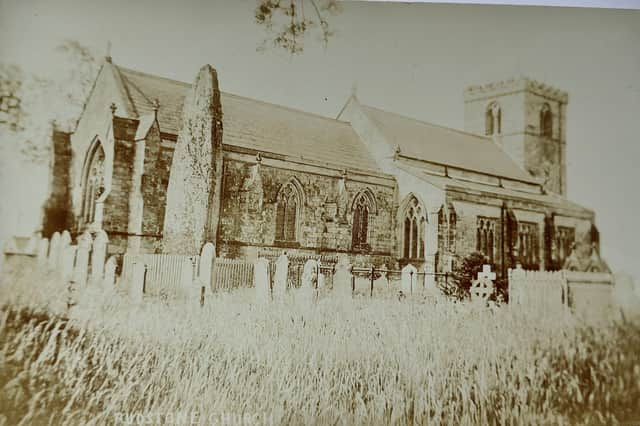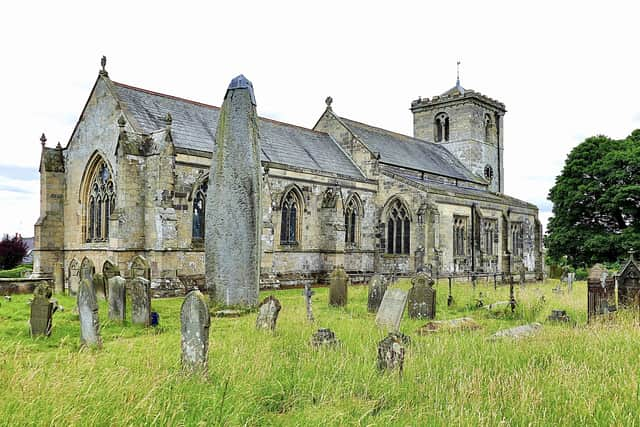The Now and Then column with Aled Jones: Focusing on Rudston and its long history


Mr Jones focuses on Rudston’s All Saints Church and the ancient monolith within the site’s churchyard.
Mr Jones said: “People come from all over the world to see the tallest megalith (standing stone) in the United Kingdom at Rudston.
Advertisement
Hide AdAdvertisement
Hide Ad“This ancient and picturesque settlement, so rich in folklore, is also the site of other now disappeared monuments.


“The Monolith, as it’s called, is situated in the cemetery of All Saints Church and is over 25 feet in height; an excavation suggests that its depth below ground is just as great.
“Talk about impressive!
“This week’s vintage postcard combines a haunting view of the Monolith with the church stood proudly behind it. While in postally unused condition, it is badly faded due to its great age (over 120 years old). There are no obvious changes apart from the protective fencing around the monument, sadly missing from the modern comparison photo.
“Many visitors combine a trip to the historic monument with a look inside the church – which dates to around 1100 and was enlarged during the 13th century, therefore making it of Norman origin.
Advertisement
Hide AdAdvertisement
Hide Ad“The stone itself is a great deal older than the Norman church, dating to the Neolithic era or New Stone Age, and is made out of Moor grit conglomerate. It is considered a fine feat of engineering for the time period.
“Some historians believe that it is an erratic, brought to the site naturally by glacial action.
“However, others believe that it was hewn in a distant quarry and dragged by hand to Rudston (the nearest source for gritstone is Cayton Bay some ten miles away).
“A more fanciful explanation for the origin of the Monolith is that the Devil hurled a stone thunderbolt at the church in retaliation for the persecution of local pagans, but God divinely intervened and the projectile was deflected to where it stands today.
Advertisement
Hide AdAdvertisement
Hide Ad“For many visitors, the history of the Monolith matters less than its immense ritual significance.
“It is believed to have been the focal point of a complex ritual and ceremonial landscape, one devoted to sun-worship and ancestor veneration. In short, a special hallowed place.
“This truly sacred hill dominated the landscape but not alone. It was in fact surrounded by cursus monuments, round barrows, megalithic graves, stone circles and other menhirs, as well as rectangular dwellings called long houses. Rudston is thought to be the oldest continuously inhabited village in England.”